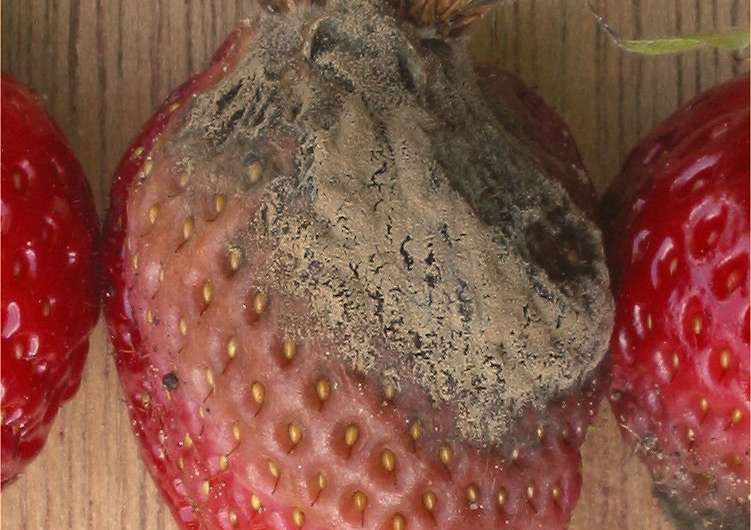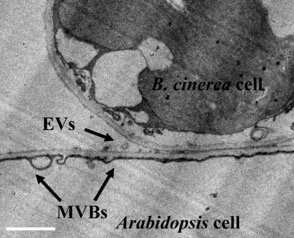Battling bubbles: How plants protect themselves from killer fungus

In the battle between plants and pathogens, molecules called small RNAs are coveted weapons used by both invaders and defenders.
In a paper publishing online Thursday (May 17) in the journal Science, researchers at the University of California, Riverside report how plants package and deliver the small RNAs, or sRNAs, they use to fight back against plant pathogens. The study focused on Botrytis cinerea, a fungus that causes a grey mold disease in almost all fruits, vegetables, and many flowers.
Hailing Jin, a professor of microbiology and plant pathology in UCR's College of Natural and Agricultural Sciences, has been studying the role of sRNAs in plant immunity and disease. Her goal is to develop effective and environmentally friendly strategies to control plant diseases and to secure food production.
During a phenomenon called cross-kingdom RNA interference, some pathogens and plants exchange sRNAs during their interactions with each other. Small RNAs are molecules that regulate biological processes by interfering with gene expression. While pathogens deliver sRNAs into plant cells to suppress host immunity, plants transfer their sRNAs into pathogens to inhibit their ability to cause infection. Until now, it remained unknown how small RNAs move across the cellular boundaries between hosts and pathogens.

Jin's team found that during infection with Botrytis cinerea, plant cells package sRNAs inside bubble-like sacs, called exosomes, which are sent out of the plant cells and accumulate near the site of infection. These 'battling bubbles' are taken up by the fungal cells efficiently. The transferred host sRNAs inhibit the expression of fungal genes needed to cause the disease. The research was performed using Arabidopsis thaliana, a small flowering plant widely used as a model species because it is easy to grow and study.
"The discovery of the role of exosomes in cross-kingdom RNA interference will help us develop effective delivery methods to target plant pathogens with artificial sRNAs, with the goal of controlling plant diseases in crops, said Jin, who holds the Cy Mouradick Endowed Chair at UCR and is a member of the university's Institute for Integrative Genome Biology.
Jin said her group is also characterizing the pathogen targets of the protective sRNAs transferred from the plant to help identify new genes involved in pathogen virulence.
More information: "Plants send small RNAs in extracellular vesicles to fungal pathogen to silence virulence genes" Science (2018). science.sciencemag.org/cgi/doi … 1126/science.aar4142
Journal information: Science
Provided by University of California - Riverside



















